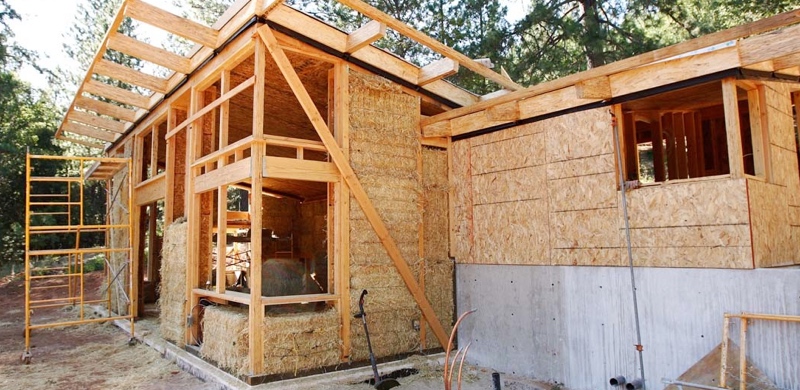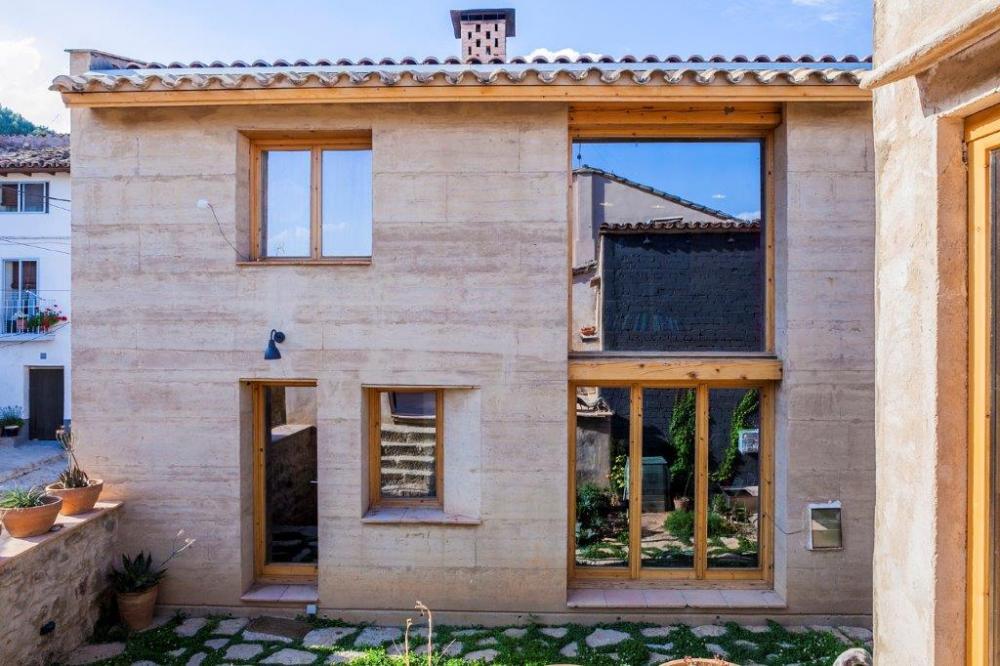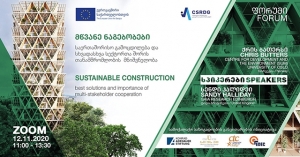Sustainable Construction: Solutions & the Importance of Multi-Stakeholder Cooperation
It takes a good engineer to make something bigger and more complicated. But it takes a brilliant engineer to make it smaller and simpler. – E.F. Schumacher.
With growing attention on the notion of corporate social responsibility (CSR) and responsible business in Georgia, more and more companies are focusing on environmental and sustainable considerations in their operations. The construction industry is one of the sectors where this is most important.
The construction sector has a huge impact on the environment, from energy usage to emissions. Construction can also result in hazardous waste, and the improper disposal of such waste can result in pollution that affects not just the environment, but also people’s health. Therefore, there is increasing pressure on construction firms globally to reduce their adverse environmental impact.
The goals of sustainable construction are to reduce the industry’s negative impact on the environment by offering solutions that are better for business, the environment and human health and well-being.
While there are challenges involved in adopting sustainable construction methods, there are also great benefits too.
The recent real estate boom in Tbilisi and Batumi, along with economic benefits, has resulted in a number of social and environmental problems, including deterioration/loss of green spaces, increased GHG emissions, and high energy consumption, pollution and waste.
Though the term “Green Building” is becoming more and more popular in Georgia, serving as a good marketing message, it is often used in the wrong sense, and the principles of sustainable construction are seldom followed.

Source: constructiontuts.com
Civil society organizations (CSOs) work actively on these various social and environmental issues with the different stakeholders, among them businesses and local authorities. Yet, in Georgia, they often lack relevant information regarding green and sustainable construction, believing it both expensive and unachievable, especially for a developing country such as this. As a step towards challenging this misconception, and in order to popularize the concept of sustainable construction, on November 12, an online forum titled ‘Sustainable Constructions: Best Solutions and the Importance of Multi-Stakeholder Cooperation’ was organized by the Center for Strategic Research and Development of Georgia (CSRDG), with the support of the EU and Konrad Adenauer Foundation (KAS), within the project ‘Georgian Civil Society Sustainability Initiative.’ A wide range of stakeholders eagerly participated, among them CSO representatives, environmentalists, construction and development companies, building owners and operators, architectural agencies, academics, researchers, and government representatives and regulators.
Two international experts with impressive experience in the area, Chris Butters from the Center for Development and the Environment, University of Oslo, and Sandy Halliday from Gaia Group, Edinburgh, presented a selection of outstanding projects to illustrate the leading design principles and results of sustainable construction, discussing how the industry can move towards green building, how to set and measure goals, and why green building does not have to cost more.
Chris Butters opened the forum by discussing today’s trends in green design, sharing examples of existing “green” buildings in Europe that, while being healthy for both people and the planet, are yet not pretentious or overly technical in design. He began by noting that in the 21st century, our “goals can be ambitious” and yet “simplicity is key.”
While pointing out that 40-50% of modern energy use and emissions can be linked to construction, and that it is more cost and energy effective to use new materials rather than recycle, Butters underlined that modern materials and construction techniques in the field of sustainable (“green”) construction can bring these impacts in some cases down to 0%. Using straw, earth, timber and stone as a replacement for plastics, steel and other toxic, chemical-based products not only provides health benefits for those residing, working or studying in a building, but also results in a much reduced impact on the environment, not least by minimizing the need for fossil fuels. The key, both Butters and later his colleague Sandy Halliday agreed, is in the pre-design. Rather than adding technology, such as air-conditioning, to a building, buildings can be designed at the initial stage without (or with very minimum) need for technology: overhangs to control how much sun gets into a room; high, slanting ceilings to allow light to reach the very back of the room (guaranteed to raise room-user productivity by up to 5%!) which also allows air to circulate, and insulation (such as that made from hemp or the recycled cotton and wool of clothing) to make the building more energy efficient.
“You can essentially build with anything,” Butters says. “It’s all about context. But before that, you have to convince others that you’re not crazy!”

A straw bale house. Source: greenplanethomes.ca
How? But providing those skeptics with proof of all that has been achieved before: scientific evidence that there are huge benefits in building with sustainable materials for our better physical and psychological health, and there is plenty of evidence out there!
“Energy efficiency is the cheapest form of energy,” Sandy Halliday informed forum participants. “Buildings should be designed to be low-impact, low-cost, with no or minimal need for mechanical or chemical transformation.”
After highlighting that we Earthlings are currently using three planet’s worth of resources, and recycling only 10% of that, she introduced the interesting concept of the recyclable house: a construction designed for potential future deconstruction and reuse, with a “passport” of all the materials used so that it can be a “storehouse for future materials.”

A rammed earth house in Huesca, Spain
“There is so much opportunity for further innovation,” she enthused. An attendee then asked what the incentives were to encourage more sustainable construction, highlighting the key challenges in Georgia as a lack of awareness, trained specialists and sustainable products, as well as access to affordable loans.
Halliday agreed that having the banks and local authorities on board, as well as overall social awareness of the benefits of sustainable construction, is also key, and gave the example of Austria and Scandinavia where, with time and scientific proof that such building methods are neither necessarily more expensive nor more difficult, a voluntary regulation for construction eventually became a national and recognized standard. “Mindsets can be changed through proof,” Butters added. “And you may be frustrated at how slow it comes, but ‘bottom-up’ pressure for clean, environmentally sustainable alternatives is the only way to go. Show them the success stories, bring them samples of green construction materials from abroad, invite the experts to train the local workforce, and you will see the enlightenment beginning to turn things around- even within the financial institutions needed to fund such initiatives.”
It is essential for Georgia- from bottom to top- to recognize the need to reduce the negative environmental impact of construction firms and switch to more sustainable approaches of design, as well as to understand the benefits and challenges of sustainable construction and apply green building principles in practice. There are many lessons to be learned from the successes and studies of other countries: all the stakeholders need to do is have a little imagination, a little trust, do some research, and then push for change.
The goals of sustainable / green buildings:
• Near zero climate emissions
• Very low energy, and only renewable
• No polluting materials
• Low water use
• Low waste, maxium recycling
• Ecological site planning
• Healthy indoor environment
• Attractive and enjoyable
How? Here are some ideas from GAIA International Consulting:
• Have a holistic vision, reduce space needs, use existing buildings
• Choose an efficient location, consider communal/co-use purposes
• Choose a bioclimatic design which minimally disturbs the environment
• Have it as a compact building of simple and flexible form
• Plan for temperature zoning, natural ventilation, and passive solar gain/cooling
• In construction, consider prefabrication, adaptability and durability
• Use non-composite, local and non-toxic materials
• Have it function with minimum, low-impact and user-friendly technology.
By Katie Ruth Davies











